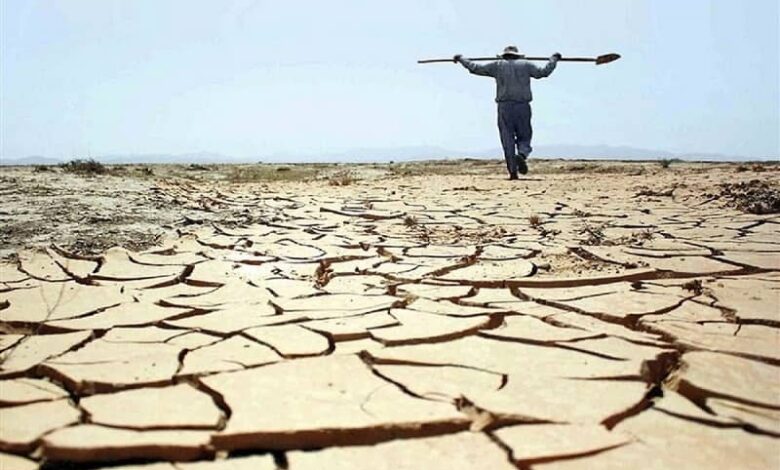Iran’s Environment Ravaged by Regime Policies

Experts Warn About Environmental Disasters In Iran
Three-minute read
Written by
Farid Mahoutchi
Since the ascent of the mullah regime to power in Iran, a multifaceted crisis has emerged, characterized not only by domestic repression and regional destabilization but also by profound environmental degradation. The regime’s policies, marked by anti-populist tendencies and a disregard for ecological sustainability, have inflicted severe damage upon Iran’s natural landscapes. Rivers and lakes have desiccated, northern forests have succumbed to extensive degradation, and groundwater reservoirs have been depleted to alarming levels, precipitating land subsidence across various regions. The cumulative effect of these environmental catastrophes has rendered certain areas uninhabitable, prompting mass migrations away from affected regions.
Even the regime’s state-controlled media outlets, typically reticent on matters of criticism, have been compelled to acknowledge the severity of these environmental crises. An article titled “The climate migration bell has rung,” published in the state-run newspaper Resalat on February 21, 2024, underscored the urgency of the situation. It elucidated how the climate crisis in Iran has intensified over the past decade, with experts expressing grave concerns about the sustainability of life in major urban centers like Isfahan, grappling with acute water shortages and land subsidence.
Dariush Golalizadeh, the head of the National Center for Air and Climate Change at the Environmental Protection Organization, has furnished statistics indicating that propelled by climate change, approximately 800,000 individuals from central and southern provinces have migrated northward over the past two years alone. This migration, directly attributable to climate change, portends potential security risks for the future.
In Isfahan, a critical water deficit of 13 billion cubic meters has been recorded, indicative of the stark imbalance between water usage and availability. While official figures on migration from Isfahan to other provinces remain elusive, reports dating back to 2016 document residents relocating northward to escape drought-related adversities along the Zayandeh Roud River.
Government surveys have corroborated the looming specter of population migration from vast swathes of Iran’s central plain, particularly within Isfahan province, owing to pronounced groundwater deficits. Reports from the state-run Entekhab website have quantified the negative water balance in Isfahan as equivalent to approximately 20 rivers the size of Zayandeh Roud.
Isfahan confronts not only a water crisis and the desiccation of vital water bodies like the Zayandeh Roud and Gavkhoni Wetland but also a severe subsidence crisis exacerbated by climate change, population growth, and the dearth of surface water resources. Rampant extraction of underground water has disrupted the hydrological equilibrium, precipitating an array of environmental perils.
Mohammadreza Fallah, an Isfahan representative in the Supreme Council of Provinces, has identified the dwindling groundwater reservoirs as the primary catalyst behind the subsidence phenomenon. He notes that Iran’s subsidence rate is nearly 90 times the average of developed nations, with major urban centers such as Isfahan and Tehran bearing the brunt of its impacts.
November 19 – Isfahan, central #Iran
Thousands of locals are joining farmers protesting for their share of water from the local Zayandeh-rud River. Regime officials have long rerouted the waters for their own purposes.#IranProtests#اعتراضات_سراسریpic.twitter.com/OCnuGUSEYM— People's Mojahedin Organization of Iran (PMOI/MEK) (@Mojahedineng) November 19, 2021
In Isfahan, districts 11 and 15, along with central areas, witness land subsidence, with surrounding locales like Shahin Shahr, Flowerjan, Najafabad, and the vicinity of Beheshti Airport similarly affected. Khorzouk, situated near Isfahan, has not been spared from the deleterious consequences of subsidence.
The ramifications of climate change on water resources are far-reaching, encompassing alterations in precipitation patterns, water currents, the proliferation of dust storms, and widespread land subsidence. This unfolding catastrophe imperils one of Iran’s most historic cities, with the pace of these transformations accelerating alarmingly.
Geological Organization data from 2016 revealed that 2,300 square kilometers of Isfahan province’s plains were susceptible to land subsidence, which ballooned to nearly 10,000 square kilometers by 2020. The subsidence rate at Shahid Beheshti Airport in Isfahan alone was measured at 8 to 12 centimeters per annum.
Reports have surfaced delineating the adverse repercussions of subsidence on residential enclaves and historical landmarks in Isfahan province, signaling an imminent crisis and the potential for a new wave of migrations.
Mansour Shishehforoush, Director General of Isfahan Governorate Crisis Management, underscores how climate change-induced water scarcity and dust activation have precipitated land subsidence ranging from 4 to 18 centimeters in Isfahan, with 53 days in the first half of the year deemed unfit for habitation due to fine dust.
Water management experts attribute extensive droughts, many of which are anthropogenic in origin, to significant migrations from central to northern provinces, lured by more favorable water conditions. They caution that the perpetuation of prevailing trends will render vast expanses of Iran uninhabitable, citing inefficient water management policies, inter-basin water transfer initiatives, and exacerbated climate change as underlying drivers of migration. These experts prognosticate that internal migration will intensify in the ensuing years as Iran’s water resources approach depletion.

